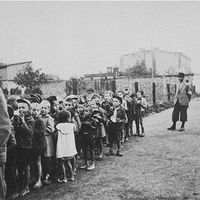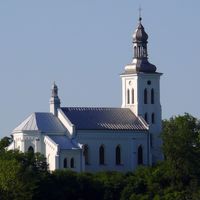Dąbie
6.5

Overview
The municipality of Dąbie, located in the Greater Poland Voivodeship within the Koło County, is an urban-rural municipality with its seat in the town of Dąbie. Its administrative history dates back to the period between 1975 and 1998, when it was part of the Konin Voivodeship. The area of the municipality is characterized by a predominantly agricultural landscape, which covers 77% of its territory, and a minimal amount of forested land, accounting for only 13%. A notable natural feature is the Rzuchowski Forest, and the municipality lies within the South Greater Poland Lowland, also known as the Koło Basin. Dąbie benefits from well-developed transportation infrastructure, including the provincial road 473 and the Tczew–Chorzów Batory railway line. The infrastructure includes the Dąbie nad Nerem railway station and the Dąbie junction, which provides connections to the A2 Motorway. Within the municipality, there are two Roman Catholic parish churches belonging to the Włocławek Diocese, as well as a Mariavite community associated with the Old Catholic Church. Demographic data from 2009 show that the municipality had a population of 6,492, with an average per capita income of 2,501.83 PLN. Dąbie also has a strong tradition of volunteer firefighting, with multiple units operating in the region. The municipality borders areas such as Brudzew and Uniejów, making it a local transportation hub. It maintains international partnerships, including with the town of Velyka Dymerka. An interesting fact is the diverse land structure of the municipality, which occupies 12.86% of Koło County's area, along with growing interest in local cultural heritage.
Location
2025 Wizytor | All Rights Reserved



